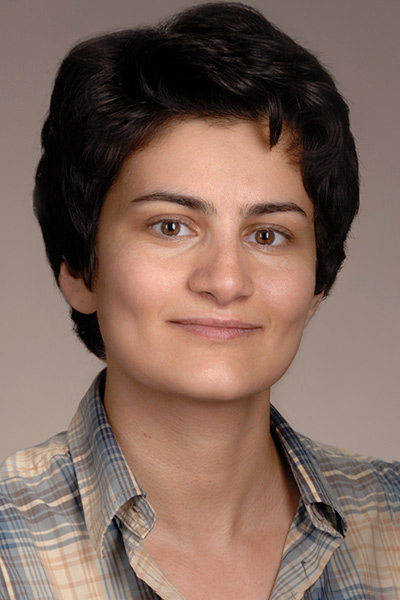
Poster presenter: Sara Alehashemi, MD, MPH, rheumatologist and research fellow at the National Institute of Allergy and Infectious Diseases (NIAID)
Poster title: Health and Socioeconomic Outcomes in a Neonatal-Onset Multisystem Inflammatory Disease (NOMID) Cohort Followed for a Median of Fifteen Years
Scheduled poster session day and time: Sunday, Nov. 8. 9 – 11 a.m. EST
In general, what is your poster about?
My poster is about the long-term outcome in patients with NOMID, managed by their local providers. NOMID is the most severe form of an autoinflammatory disease spectrum called Cryopyrin-Associated Periodic Syndromes (CAPS). NOMID is caused by gain-of-function mutations in NLRP3, the gene that encodes a protein that leads to the overproduction of an inflammatory cytokine IL-1b.Patients with NOMID present with fever, rashes, meningitis, joint pain, and dysplastic bone lesions. If untreated, inflammation in the inner ear leads to progressive hearing loss in childhood, inflammation in the brain can lead to blindness, and neurocognitive defect and bone lesions can cause premature closure of the growth plate and limb-length discrepancies.
Our research group at NIH started a clinical trial of IL-1 blocker agents to treat NOMID patients about 17 years ago (NCT00069329) and reported the dramatic clinical response with resolution of the systemic and organ-specific inflammatory manifestations. IL-1 blocking agents are now the standard of care in the treatment of patients with NOMID.
We are now reporting the long-term health and socioeconomic outcomes in this cohort of 41 NOMID patients.
Why did you decide to investigate this topic?
Before IL-1 blocking drugs were used to treat patients with NOMID, up to 20% of children did not live to adulthood. In the past, we were able to show that treatment with IL-1 blocking agents early in life can stop inflammation before significant organ damage has occurred. We now wanted to determine whether treating NOMID patients with these agents would slow the organ damage or stop the organ damage long term after more than 10 years of treatment. In fact, with early genetic diagnosis, early initiation of IL-1 blocking treatment, weight-based dose adjustments as children grow, and with close monitoring of disease activity, we can slow down the progression and even prevent disease complications such as hearing loss and blindness. NOMID patients can lead productive lives. They can go to school, hold a job, and start a family, something that not long ago was difficult or impossible to achieve for most. I would like to highlight the challenges our patients with NOMID-related disabilities sometimes face in getting the right services that aid them in navigating life, including hearing aids, cochlear implants, speech, and occupational therapies.
What are you working on next related to this poster?
In following this cohort, we have learned about optimizing and adjusting treatment with IL-1 blocking agents to protect our patients during episodes of stress or infection from developing disease flares. We are now using this information to advise newly discovered patients with NOMID in optimizing their treatment. We will continue to look for better treatments, including the use of oral agents that target the NLRP3 inflammasome directly; some are in early development.
We will continue to follow this cohort. Long-term follow-up is crucial for detecting potential disease or treatment-related sequelae such as malignancies, infections, or metabolic complications, which we have not found so far.
What excites you most about your work?
I love the challenge of diagnosing and treating patients with complicated medical conditions who are challenging to manage in the community. In an era where our understanding of the genetic and immunological causes of diseases has expanded dramatically, we can use the lessons learned from managing and studying patients with NOMID and help patients who suffer from other rare immunedysregulatory disorders that are difficult to treat.
This collaborative environment at the NIH, where basic and clinical research are going hand in hand, and the possibilities to rapidly translate clues from research findings into novel treatment studies at the NIH, offer unique opportunities to study rare diseases and are key for me in feeling motivated and inspired at work.
